Throughput Measurement of a Dual-Band MIMO Rectangular Dielectric Resonator Antenna for LTE Applications
Abstract
:1. Introduction
2. Geometry of the Presented Antenna
3. Antenna Design and Analysis
3.1. Initial DR Dimensions and Parametric Study
3.2. Electric Field Effects in DR
4. Antenna Performance Measurements
4.1. Antenna Parameters Analysis
4.2. Diversity Performance Analysis
4.3. MIMO Performance Analysis
5. Conclusions
Acknowledgments
Author Contributions
Conflicts of Interest
References
- Dahlman, E.; Parkvall, S.; Skold, J. 4 g: Lte/Lte-Advanced for Mobile Broadband; Academic Press: Cambridge, MA, USA, 2013. [Google Scholar]
- Ahsan, M.R.; Islam, M.T.; Ullah, M.H.; Singh, M.J.; Ali, M.T. Metasurface reflector (MSR) loading for high performance small microstrip antenna design. PLoS ONE 2015, 10, e0127185. [Google Scholar] [CrossRef] [PubMed]
- Ashoor, A.Z.; Ramahi, O.M. Dielectric resonator antenna arrays for microwave energy harvesting and far-field wireless power transfer. Prog. Electromagn. Res. C 2015, 59, 89–99. [Google Scholar] [CrossRef]
- Khan, A.A.; Jamaluddin, M.H.; Nasir, J.; Khan, R.; Aqeel, S.; Saleem, J. Design of a Dual-Band MIMO Dielectric Resonator Antenna with Pattern Diversity for WiMAX and WLAN applications. Prog. Electromagn. Res. M 2016, 50, 65–73. [Google Scholar] [CrossRef]
- Ishimiya, K.; Ying, Z.; Takada, J.-I. A compact mimo dra for 802.11n application. In Proceedings of the 2008 IEEE Antennas and Propagation Society International Symposium, Lund, Sweden, 5–11 July 2008; pp. 1–4.
- Yan, J.-B.; Bernhard, J.T. Design of a mimo dielectric resonator antenna for lte femtocell base stations. IEEE Trans. Antennas Propag. 2012, 60, 438–444. [Google Scholar] [CrossRef]
- Nasir, J.; Jamaluddin, M.H.; Khalily, M.; Kamarudin, M.R.; Ullah, I. Design of an mimo dielectric resonator antenna for 4g applications. Wirel. Pers. Commun. 2016, 88, 525–536. [Google Scholar] [CrossRef]
- Roslan, S.; Kamarudin, M.R.; Khalily, M.; Jamaluddin, M. An mimo rectangular dielectric resonator antenna for 4G applications. IEEE Antennas Wirel. Propag. Lett. 2014, 13, 321–324. [Google Scholar] [CrossRef]
- Huitema, L.; Koubeissi, M.; Mouhamadou, M.; Arnaud, E.; Decroze, C.; Monediere, T. Compact and multiband dielectric resonator antenna with pattern diversity for multistandard mobile handheld devices. IEEE Trans. Antennas Propag. 2011, 59, 4201–4208. [Google Scholar] [CrossRef]
- Sun, Y.X.; Leung, K.W. Dual-band and wideband dual-polarized cylindrical dielectric resonator antennas. IEEE Antennas Wirel. Propag. Lett. 2013, 12, 384–387. [Google Scholar] [CrossRef]
- Fang, X.; Leung, K. Designs of single-, dual-, wide-band rectangular dielectric resonator antennas. IEEE Trans. Antennas Propag. 2011, 59, 2409–2414. [Google Scholar] [CrossRef]
- Balanis, C.A. Antenna Theory: Analysis and Design; John Wiley & Sons: Hoboken, NJ, USA, 2009. [Google Scholar]
- Kishk, A.A.; Glisson, A. Effect of air gap on cylindrical dielectric resonator antenna operating in TM 01 mode. Electron. Lett. 1994, 30, 97–98. [Google Scholar] [CrossRef]
- Singh, H.S.; Meruva, B.R.; Pandey, G.K.; Bharti, P.K.; Meshram, M.K. Low mutual coupling between mimo antennas by using two folded shorting strips. Prog. Electromagn. Res. B 2013, 53, 205–221. [Google Scholar] [CrossRef]
- Nasir, J.; Jamaluddin, M.H.; Khalily, M.; Kamarudin, M.R.; Ullah, I.; Selvaraju, R. A reduced size dual port mimo dra with high isolation for 4g applications. Int. J. RF Microw. Comput. Aided Eng. 2015, 25, 495–501. [Google Scholar] [CrossRef]
- Lee, W.C. Mobile Communications Engineering; McGraw-Hill Professional: New York, NY, USA, 1982; p. 453. [Google Scholar]
- Alayon Glazunov, A. Theoretical analysis of mean effective gain of mobile terminal antennas in ricean channels. In Proceedings of the 2002 IEEE 56th Vehicular Technology Conference Proceedings, Vancouver, BC, Canada, 24–28 September 2002; pp. 1796–1800.
- Ding, Y.; Du, Z.; Gong, K.; Feng, Z. A novel dual-band printed diversity antenna for mobile terminals. IEEE Trans. Antennas Propag. 2007, 55, 2088–2096. [Google Scholar] [CrossRef]
- Moradikordalivand, A.; Rahman, T.A.; Leow, C.Y.; Ebrahimi, S. Dual-polarized MIMO antenna system for WiFi and LTE wireless access point applications. Int. J. Commun. Syst. 2014, 30, 1–11. [Google Scholar] [CrossRef]
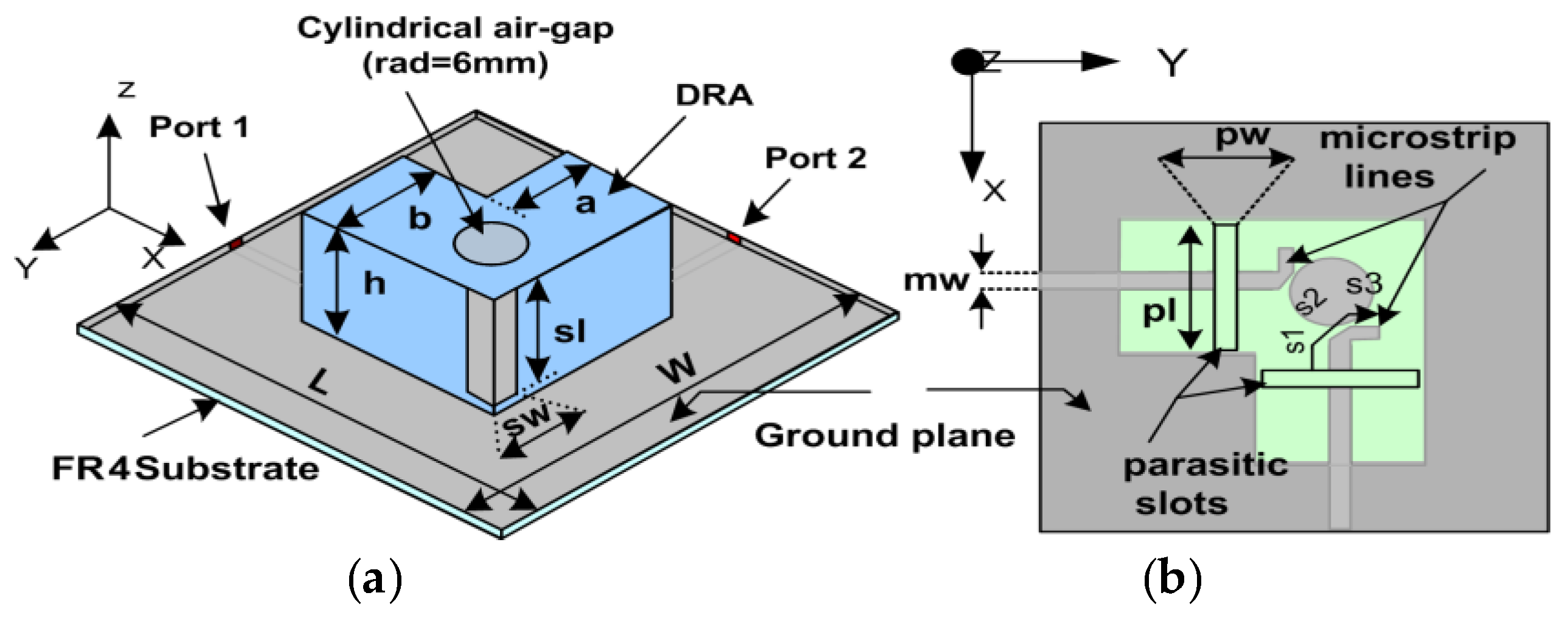
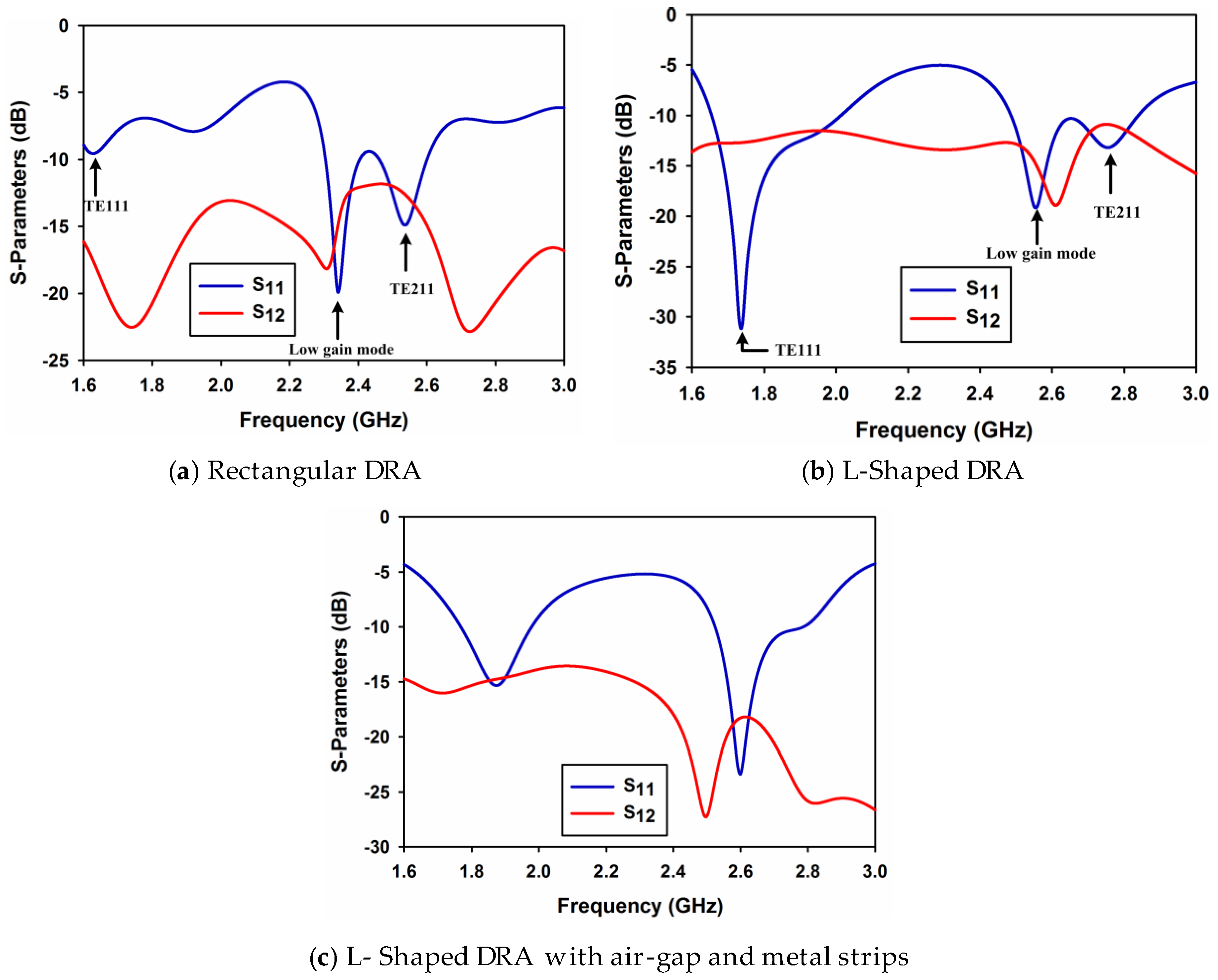

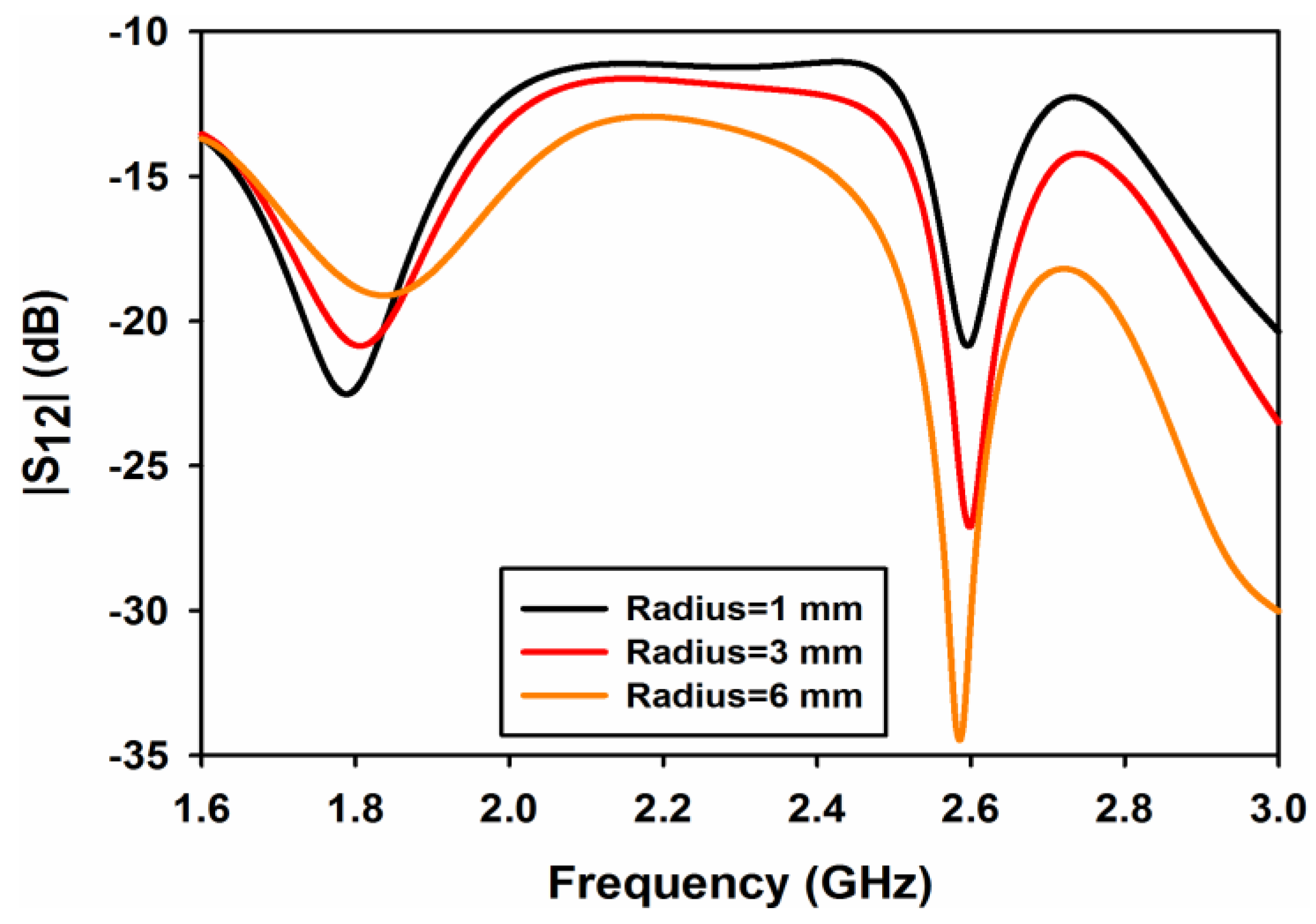
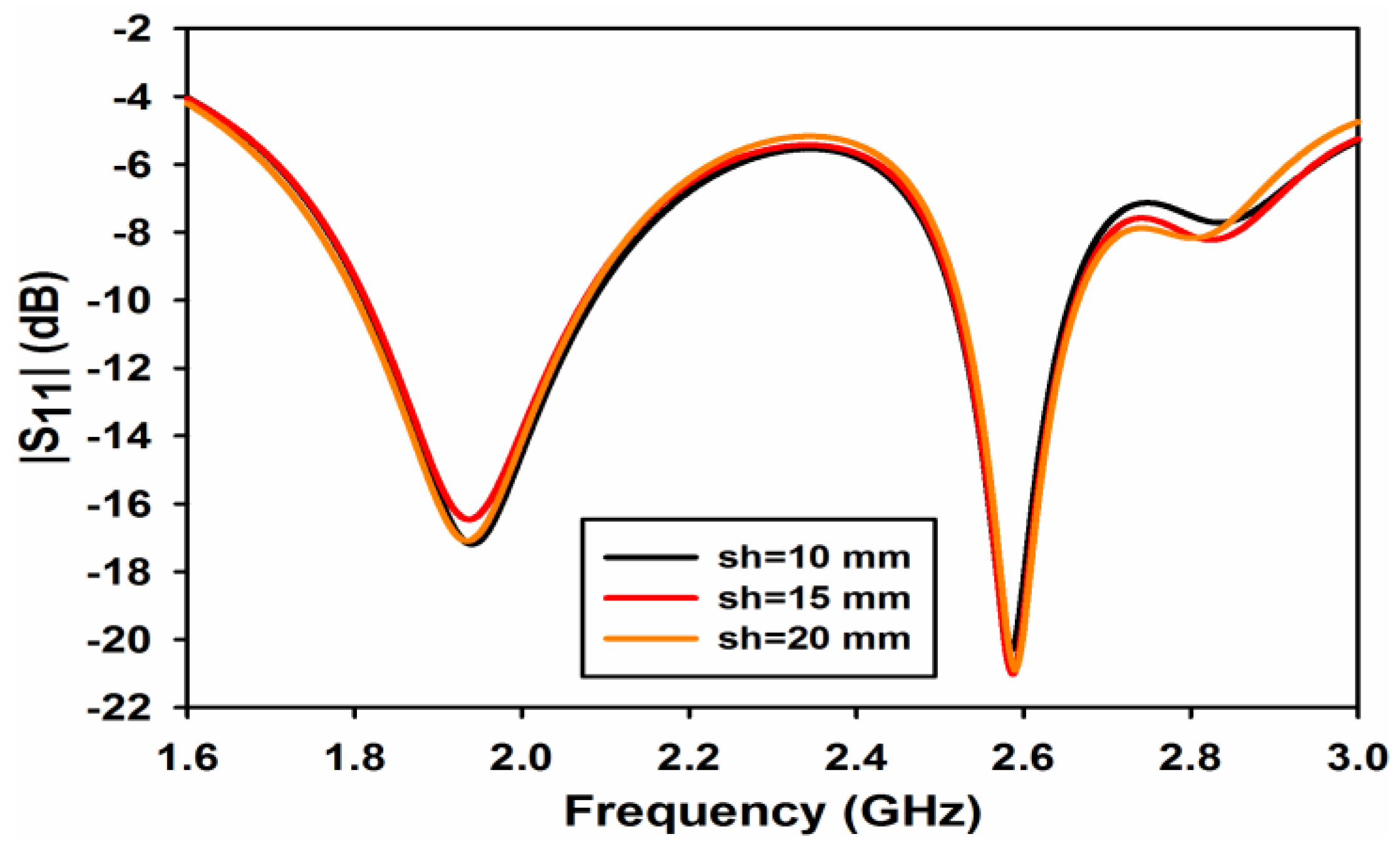
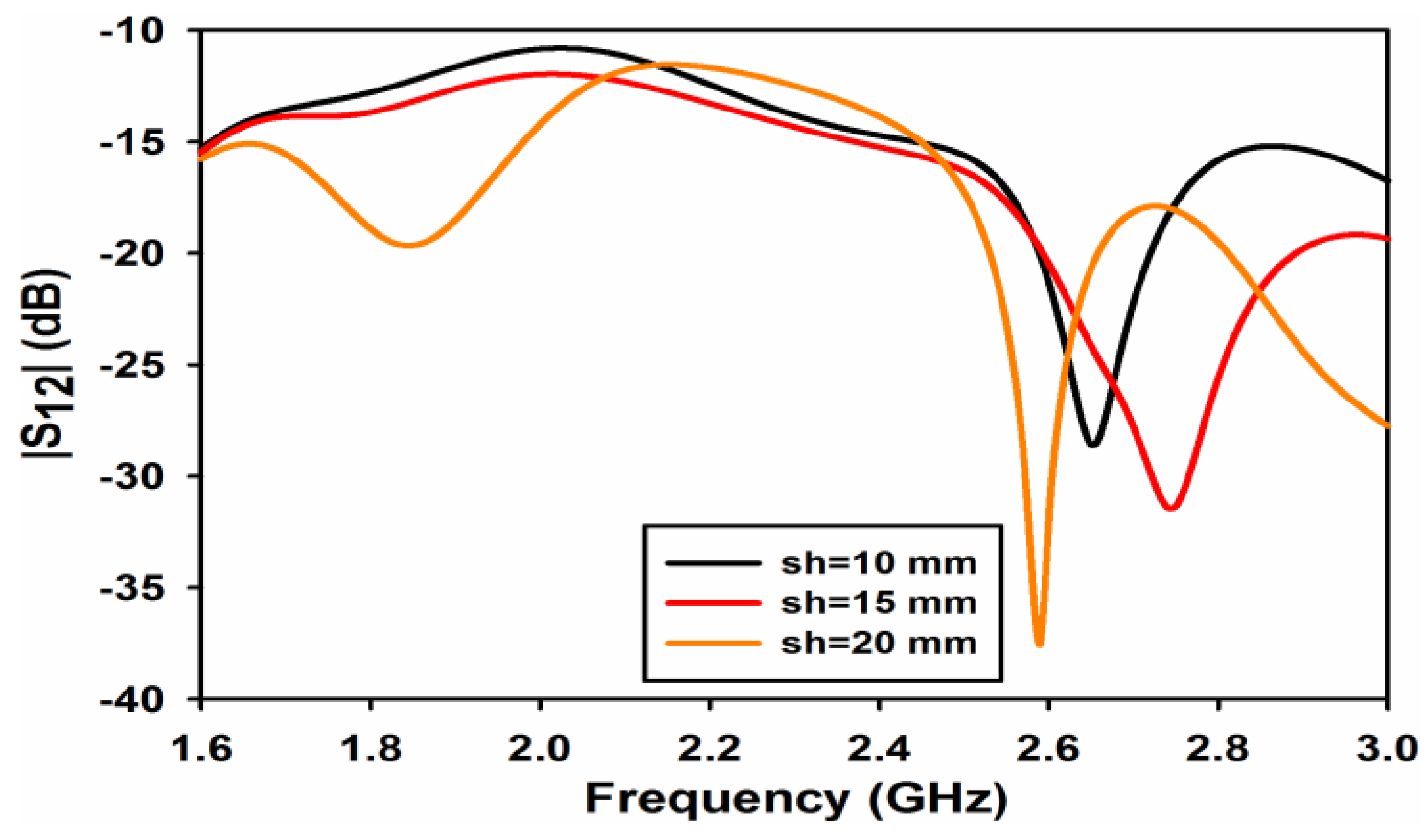
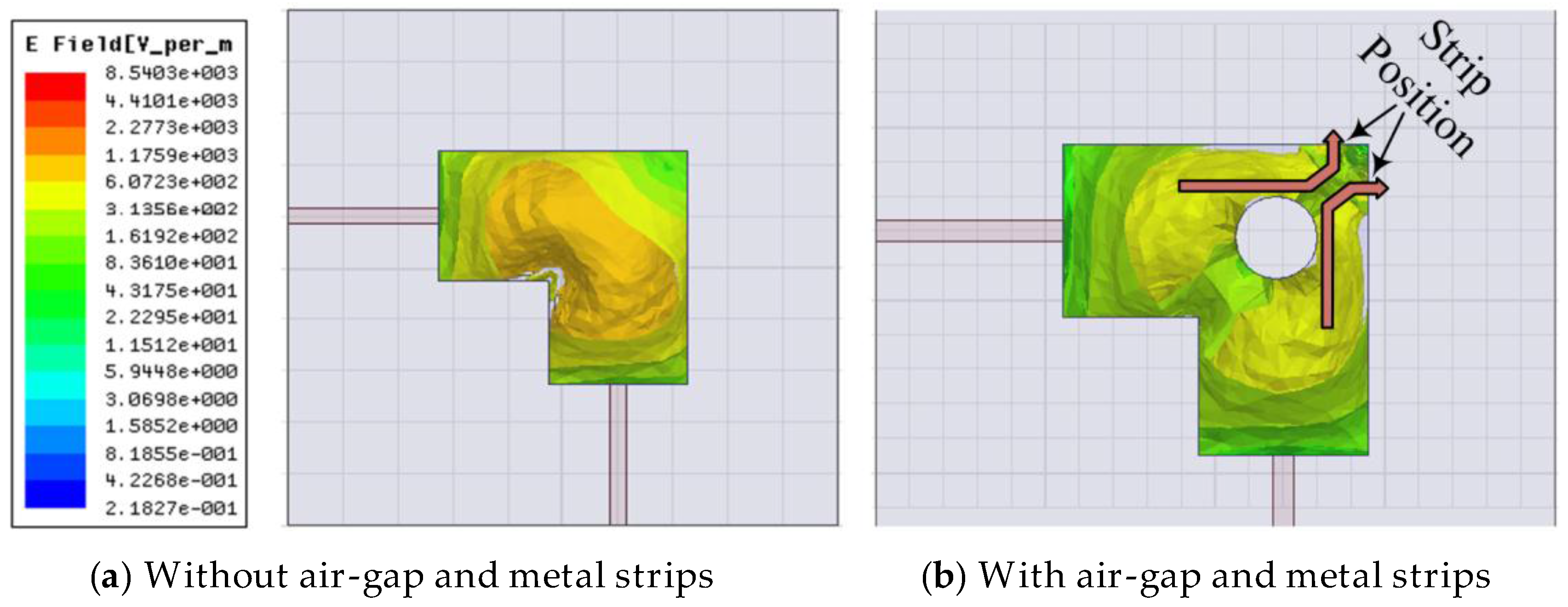
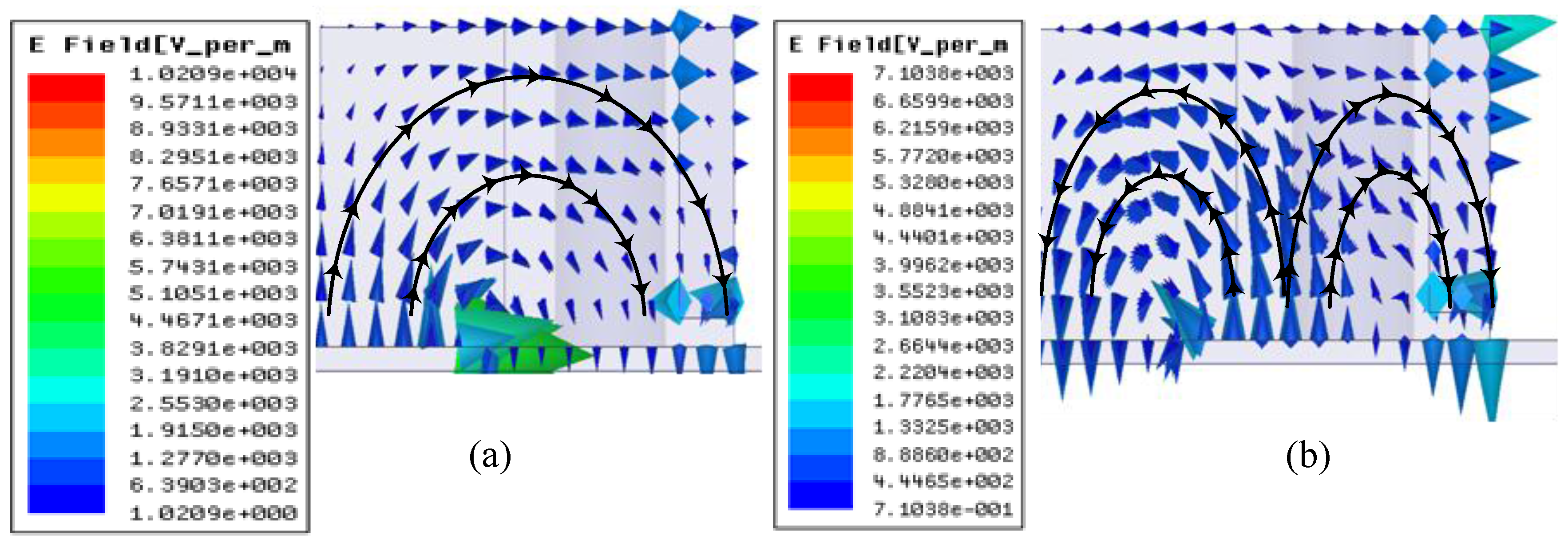
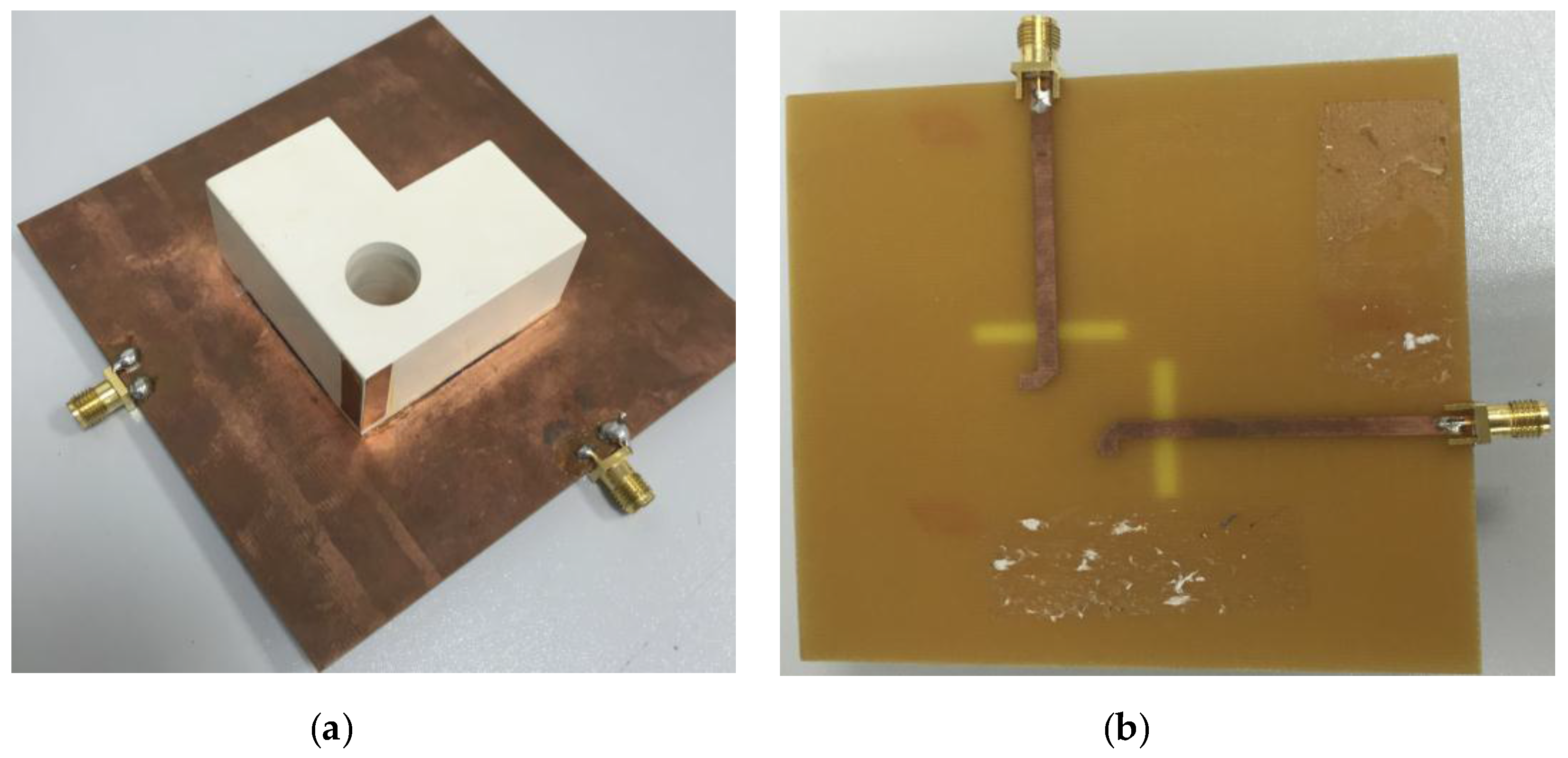
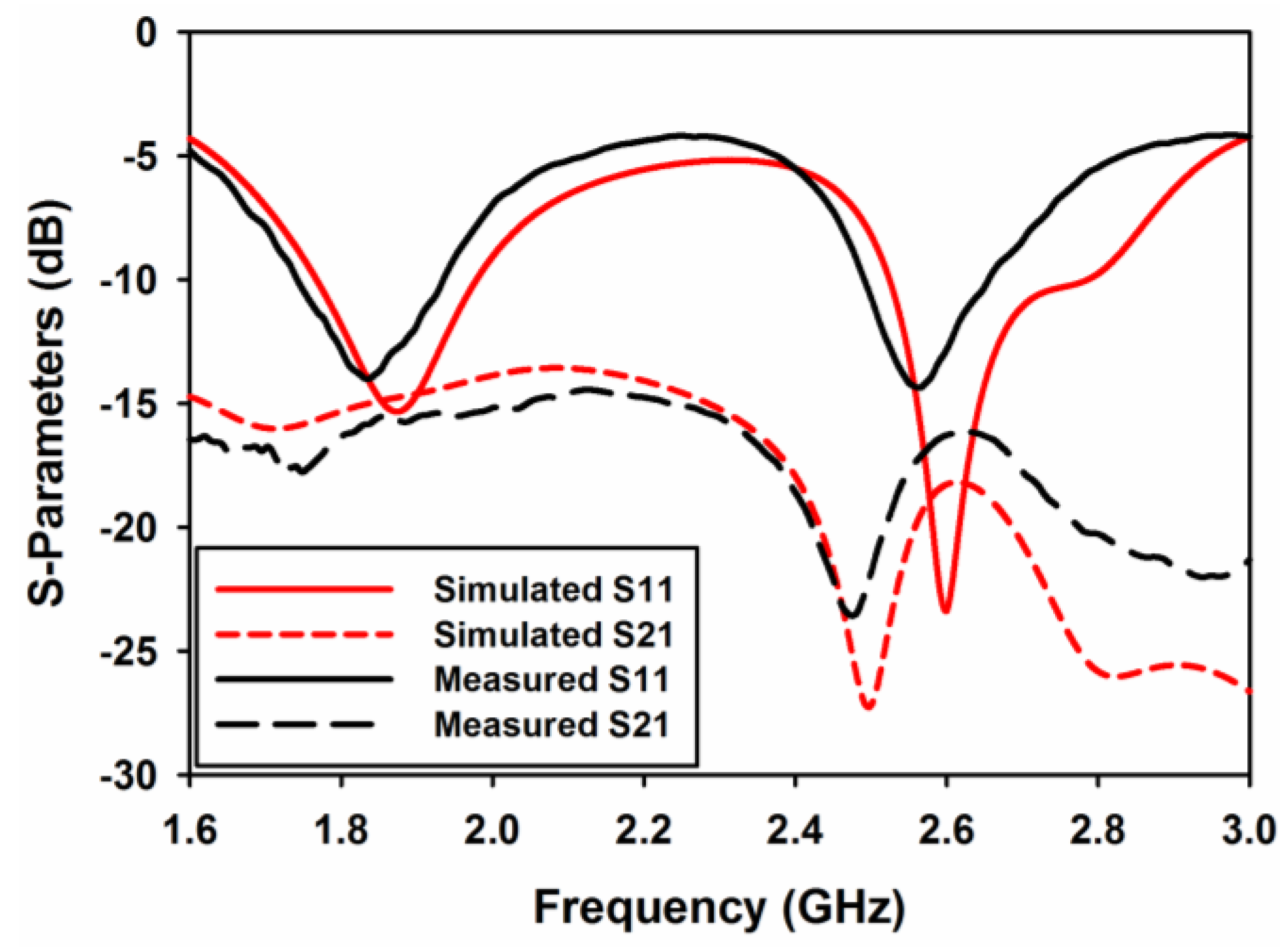

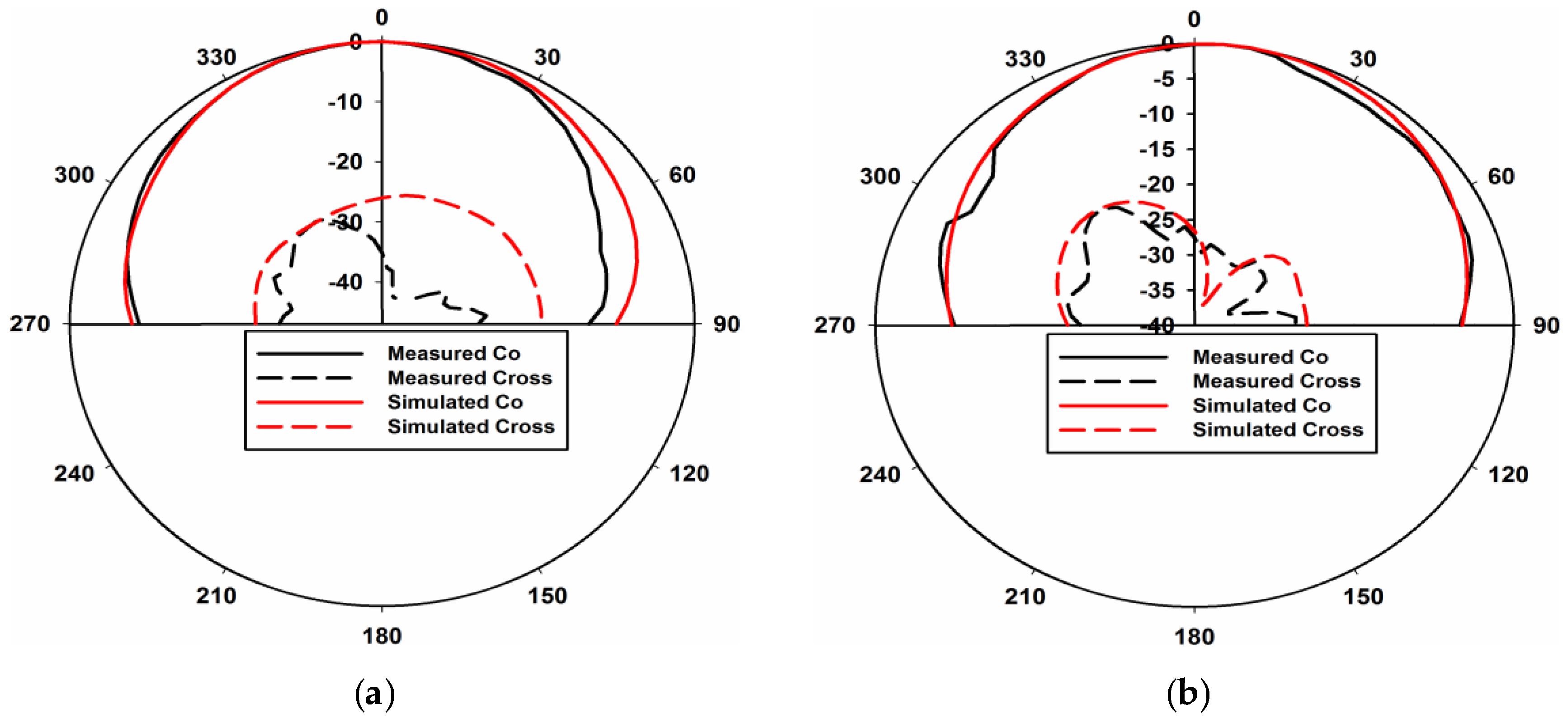

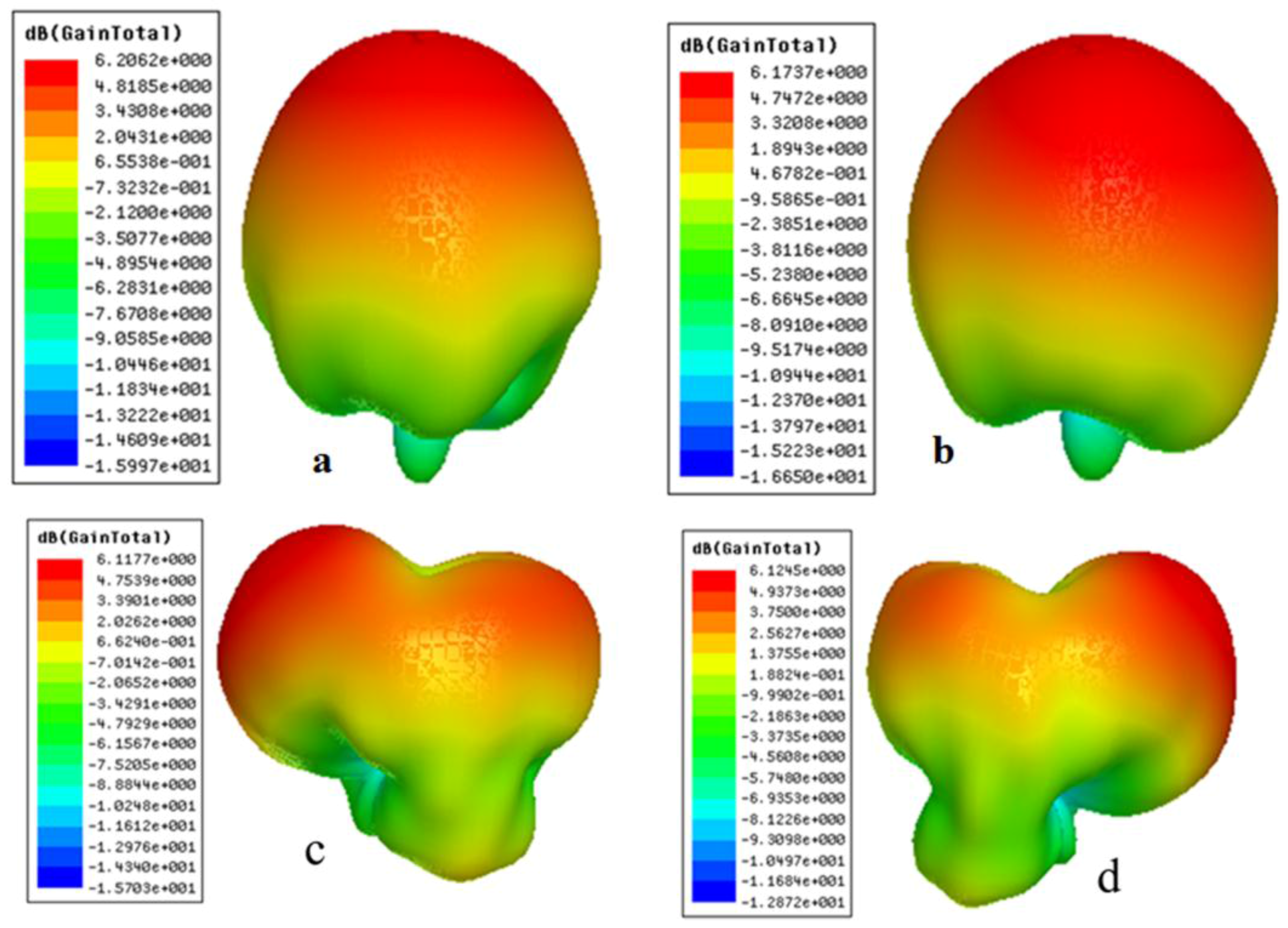
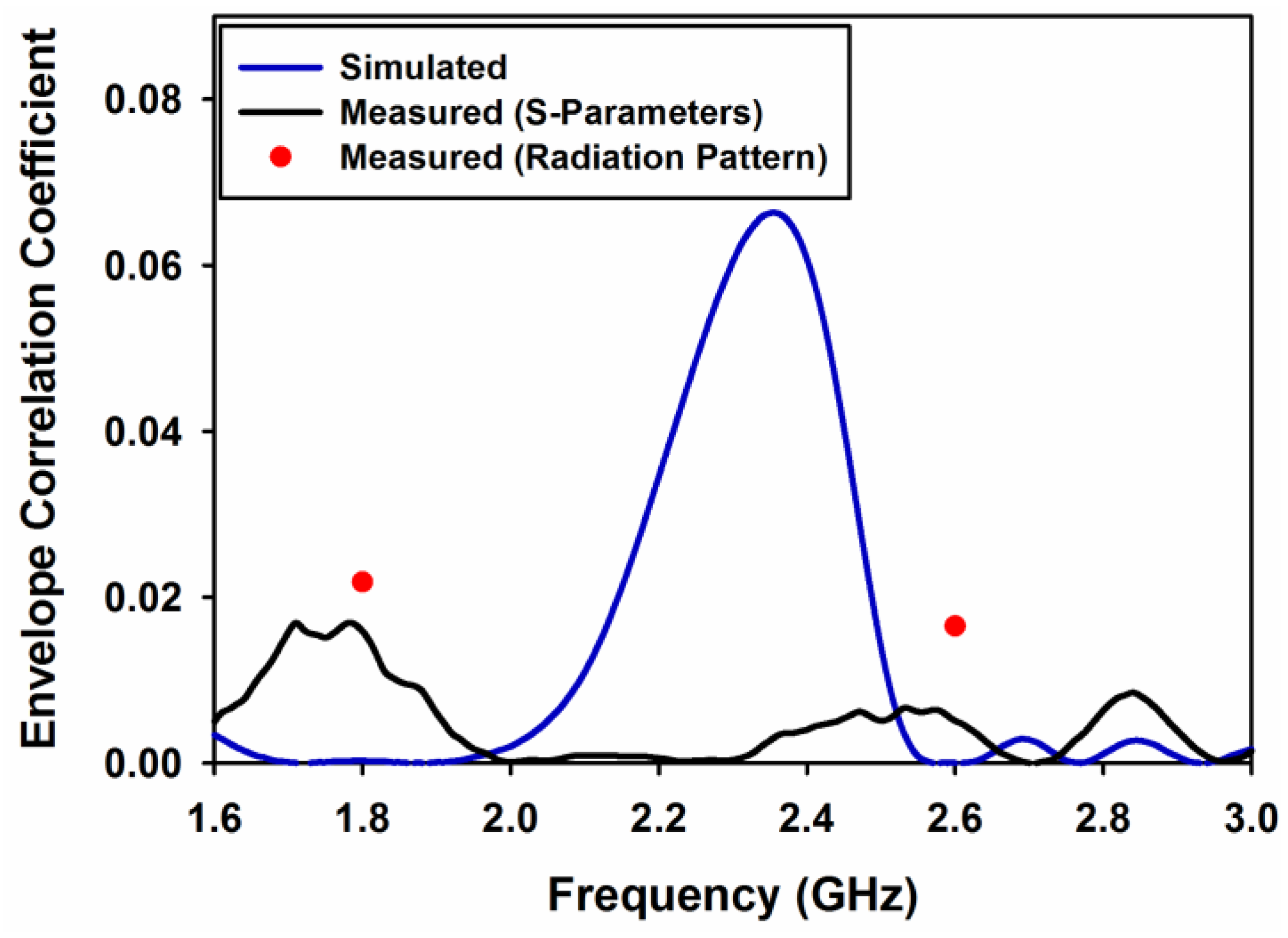
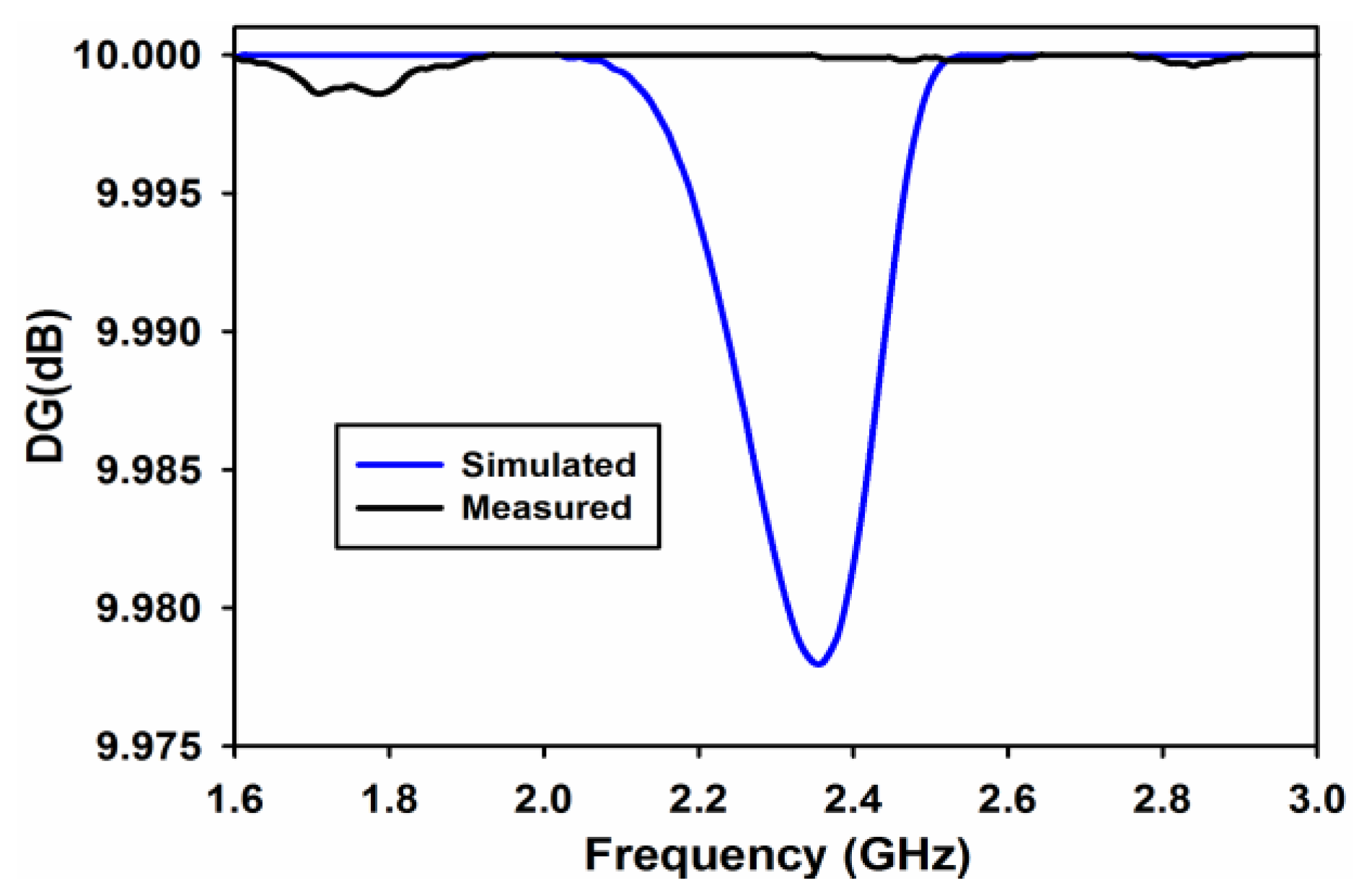
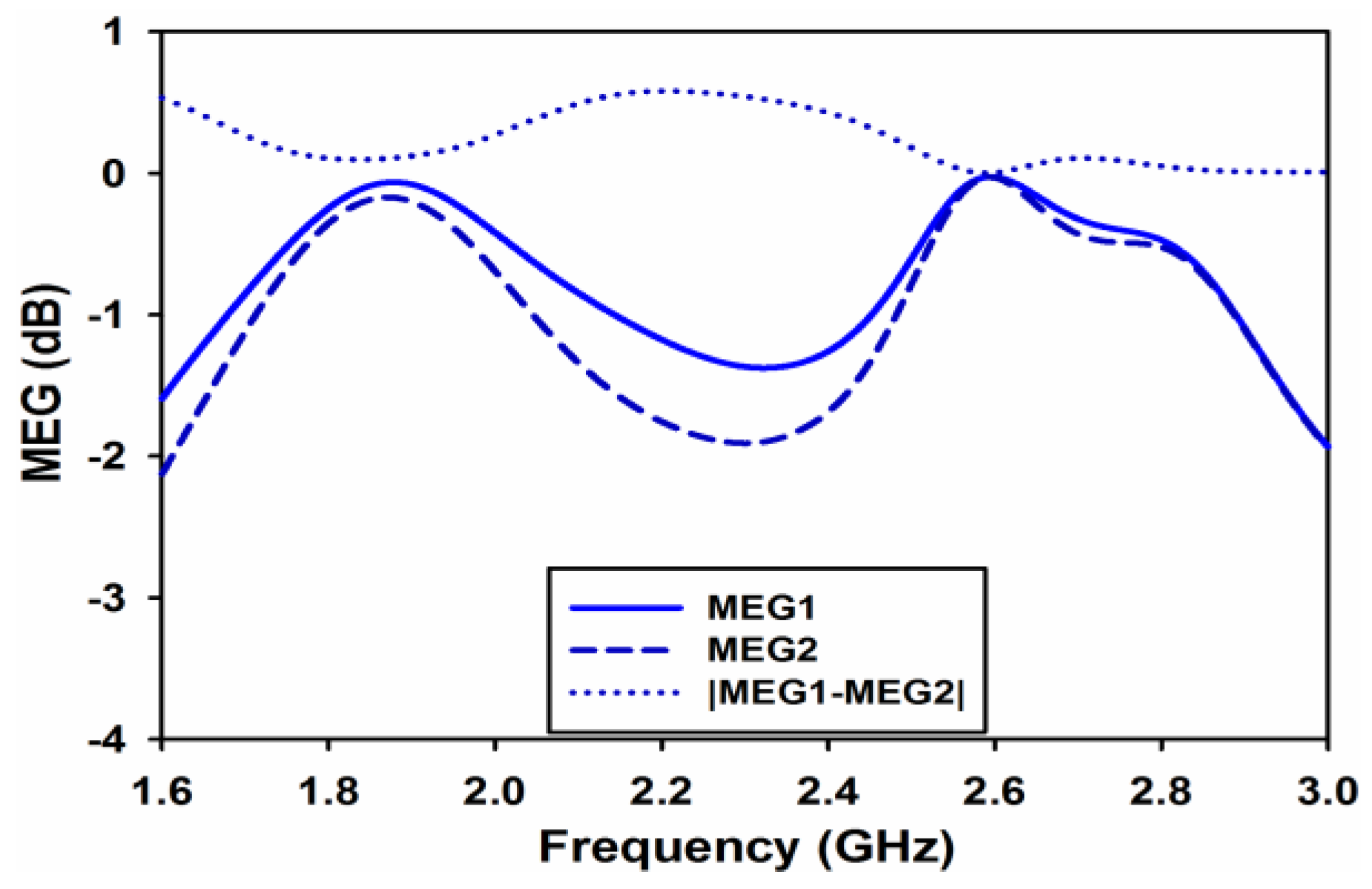
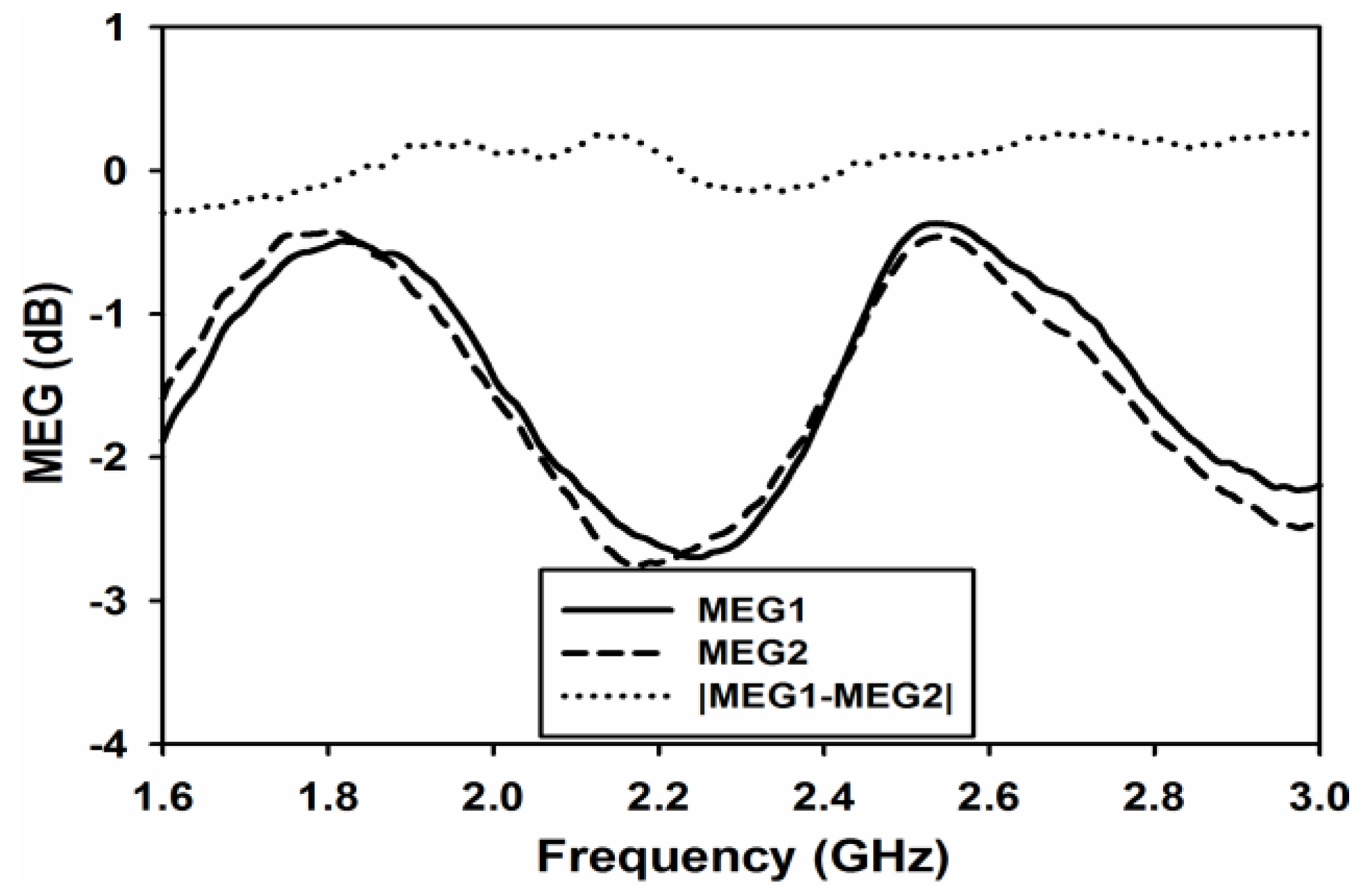
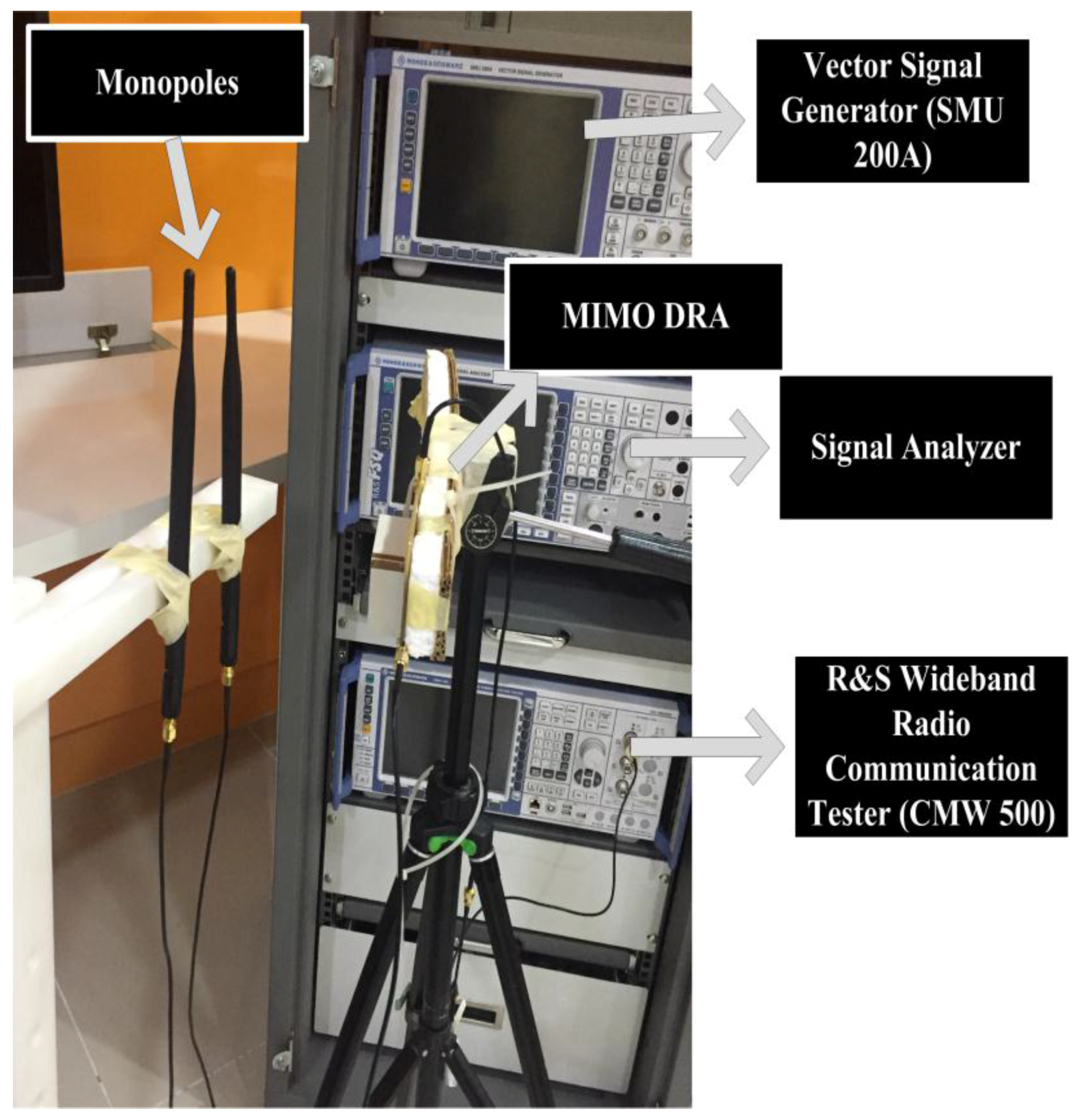
| Parameter | Value (mm) | Parameter | Value (mm) | Parameter | Value (mm) |
|---|---|---|---|---|---|
| a | 20 | b | 25 | h | 22 |
| sl | 20 | sw | 6 | pl | 23 |
| pw | 3 | s1 | 5.25 | s2 | 3 |
| s3 | 4.5 | mw | 3 | rad | 6 |
| Modulation Scheme (CQI) | Measured Throughput SISO | Measured Throughput MIMO | Maximum Throughput SISO | Maximum Throughput MIMO |
|---|---|---|---|---|
| QPSK(Mbps) (6) | 14.10 | 28.21 | 14.112 | 28.23 |
| 16QAM (Mbps) (9) | 30.33 | 56.65 | 30.352 | 56.68 |
| 64QAM (Mbps) (12) | 50.190 | 93.152 | 50.197 | 93.161 |
| Modulation Scheme (CQI) | Measured Throughput SISO | Measured Throughput MIMO | Maximum Throughput SISO | Maximum Throughput MIMO |
|---|---|---|---|---|
| QPSK(Mbps) (6) | 14.11 | 28.22 | 14.112 | 28.23 |
| 16QAM (Mbps) (9) | 30.350 | 56.66 | 30.352 | 56.68 |
| 64QAM (Mbps) (12) | 50.191 | 93.158 | 50.197 | 93.161 |
© 2017 by the authors; licensee MDPI, Basel, Switzerland. This article is an open access article distributed under the terms and conditions of the Creative Commons Attribution (CC-BY) license (http://creativecommons.org/licenses/by/4.0/).
Share and Cite
Nasir, J.; Jamaluddin, M.H.; Ahmad Khan, A.; Kamarudin, M.R.; Leow, C.Y.; Owais, O. Throughput Measurement of a Dual-Band MIMO Rectangular Dielectric Resonator Antenna for LTE Applications. Sensors 2017, 17, 148. https://doi.org/10.3390/s17010148
Nasir J, Jamaluddin MH, Ahmad Khan A, Kamarudin MR, Leow CY, Owais O. Throughput Measurement of a Dual-Band MIMO Rectangular Dielectric Resonator Antenna for LTE Applications. Sensors. 2017; 17(1):148. https://doi.org/10.3390/s17010148
Chicago/Turabian StyleNasir, Jamal, Mohd. Haizal Jamaluddin, Aftab Ahmad Khan, Muhammad Ramlee Kamarudin, Chee Yen Leow, and Owais Owais. 2017. "Throughput Measurement of a Dual-Band MIMO Rectangular Dielectric Resonator Antenna for LTE Applications" Sensors 17, no. 1: 148. https://doi.org/10.3390/s17010148







